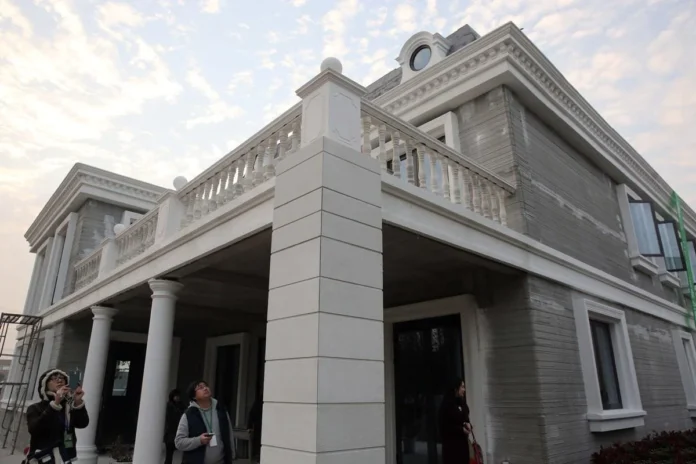Author: Jack Balderrama Morley
Date: Unknown
The idea that buildings could be printed with the click of a button has excited everyone from quirky inventors building a village in Italy to the CEO of Alphabet, one of the world’s largest companies. Designers have produced an assortment of eye-catching printed structures, taking advantage of the technique’s flexibility to create exotic forms out of plastic, concrete, metal or even salt. The pictures look nice, and 3D printing naturally has a futuristic aura out of “The Jetsons” or “Star Trek.” Evangelists claim it is the answer to the world’s housing and ecological crises, as printers will conjure cheap housing with almost no waste.
The problem is this: No one has been able to successfully take the leap from printing a fancy art pavilion to printing a functional building, and it’s still not clear if the technology is going to save the world or be another decorative footnote of architectural history.

3D printing has been around since the 1980s. Technologists developed the process, known more officially as additive manufacturing, as an alternative to other industrial manufacturing techniques, like extrusion and casting, and it has proven to be an effective, efficient way to make especially complex mechanical parts like wind turbines.
But conventional buildings are not made by extrusion or casting or any other single manufacturing process; they are accretions of dozens of different techniques from cast-and-pour concrete to spot-welded steel extrusions to laminated glass. How could one process replace the dozens of others that we currently use? Yes, that is part of 3D printing’s promise — that it’s versatile enough to do the work of multiple machines — but current printed buildings are either minimally functional, if gorgeous, pavilions or houses that are basically dumb printed boxes with traditional bric-a-brac tacked on.
Analysis: I think this article raises an excellent point. In particular, the authors question, “How could one process replace dozens of others that we currently use?” is very compelling. It acknowledges that houses are more than just walls or a roof. To truly be habitable and refined, they need to utilize many other materials, processes, and systems. Importantly though, there isn’t a date on this op-ed, so I can’t contextualize it, but my guess is that it was written some time ago, because there are more and more current examples of construction-printed housing that acknowledge and address the issues raised here. I explore some of them in posts in the Focus section. The big takeaway, though, is that 3D printed concrete should never be viewed as a standalone solution. Whether in housing our other applications, we should always be thinking about how it can mesh with other materials and processes to achieve the ideal result.
Source: https://architizer.com/blog/practice/details/3d-printed-buildings-future-or-gimmick/




